The Romans founded the city of Cáceres in about 25 B.C. It is the capital of the Cáceres province in the Extremadura region of southwestern Spain. It is known to visitors as being one of the most attractive cities in the country. The old town, known as the Ciudad Monumental, still maintains a medieval –like atmosphere with its ancient walls and few modern buildings. The influence of Roman, Islamic Northern Gothic, and Italian architecture led to the city being named a World Heritage Site by UNESCO in 1986.
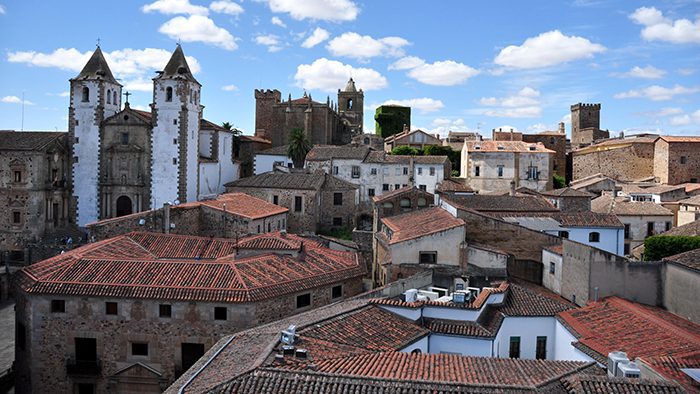
The medieval architecture has been maintained so well in fact, that the city of Cáceres has been used as a backdrop in the filming of many period dramas. It is also the home of the Universidad de Extremadura, and various churches, palaces, and two observatories.
An interesting fact about the city of Cáceres is that it is known for is its numerous stork nests, which can be found in trees and on rooftops. The city is pedestrian-friendly and allows you to take in the sites on foot. The narrow walkways will transport visitors to another century and engage them in its old charm.
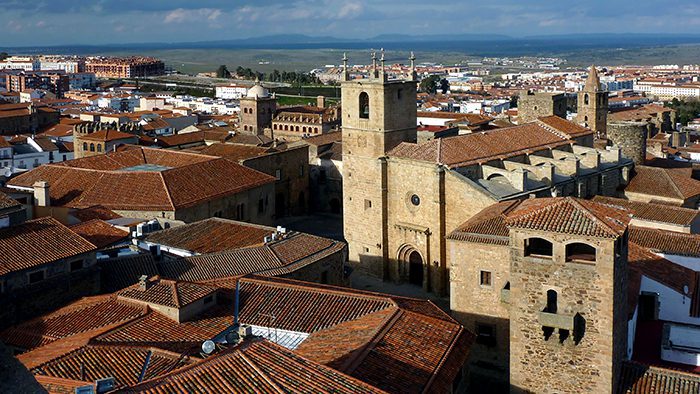
The World Music Festival is held in Cáceres annually. The non-mainstream music event attracts festival enthusiasts to various venues around the city. The city has a continental climate with the rainy season occurring during the months of March, April, May, October, and November.
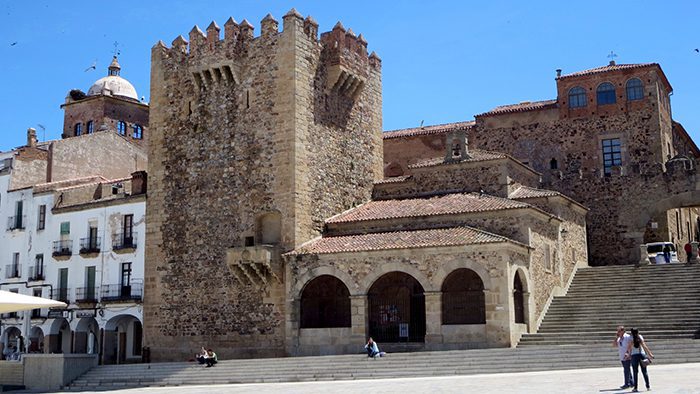
This is one of the most unique and well-preserved towers I have ever visited in Spain. It is located in the main square of Cáceres –the Plaza Mayor. It was built in the 12th century after Ferdinand II of León conquered the city. Its name, however, is derived from Caliph Abú-Ya’qub, whose troops gained control of Cáceres in 1173. Christian Knights from the Order of Chivalry of Santiago used the tower as a defense against the Arabs, and legend has it that they had their throats cut at the tower by Arab troops. In the 16th and 17th centuries people of Cáceres knew the stone structure as the “Clock Tower.”

Located right next to the Torre de Bujaco is the Arch of the Star, which is one of the five access gates of Cáceres. It was constructed in the 18th Century from 15th Century ruins, and designed by Manuel de Lara y Churriguera. First thing I noticed was its grand architecture, which was changed to a Baroque style in 1726. It was also altered around that time in order to make it larger so that carriages could fit through the space when riding through. Beyond the gate and inside a small temple visitors will see the Virgen de la Estrella-or Virgin of the Star-the icon after which the arch is named.

Conveniently next to the Bujaco Tower and the Arch of the Star, visitors will encounter the Emirate de la Paz. This hermitage was built on top of the ruins of the San Benito chapel during the Renaissance period. Inside, visitors will find paintings, an impressive dome, and the image of the Virgen de la Paz.
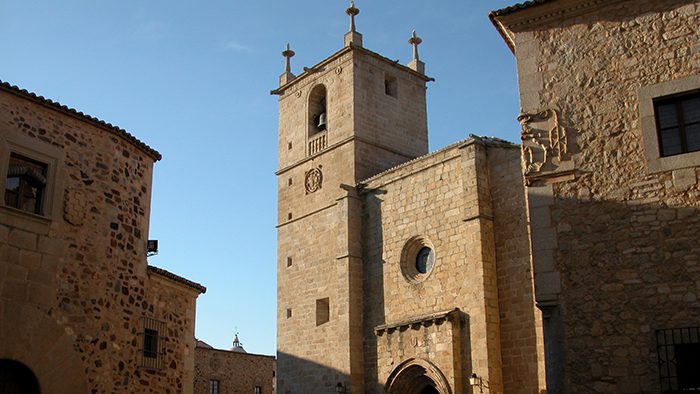
Although I only had the chance to see this church from the outside, I could tell that it was well preserved. It has been reconstructed various times since it was originally built. Its architecture demonstrates Baroque, Gothic, and Renaissance styles. On entering the chapel, you will find the tombs of Spanish noblemen including the notorious Ovando family whose distant relatives include Hernán Cortés.
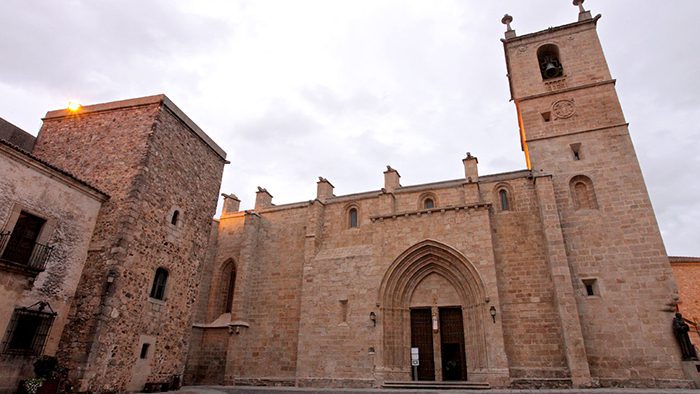
My favorite aspect of this church is the amazing view it offers from the top. There visitors will experience one of the best views in the city of Cáceres. It was built atop of the ruins of a mosque in the 13th century. At the front of the building stands the statue of San Pedro de Alcántara, by Pérez Comendador. Inside of the temple visitors can view the sacred art museum. The entrance fee to catch the beautiful views is approximately 1 Euro per person.
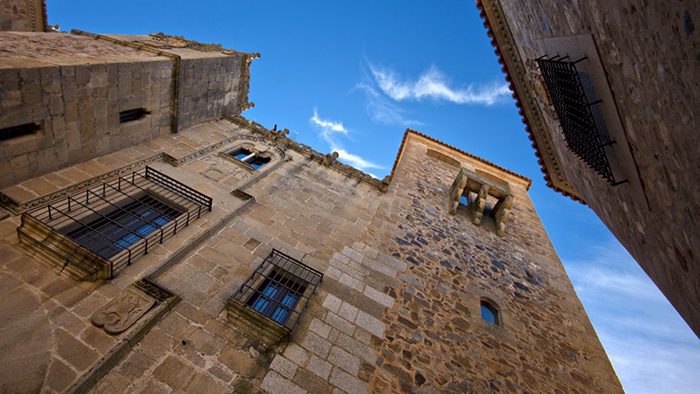
The Palace of the Golfines, which can be considered a true nobleman’s compound, was built after the Spanish Reconquista, and is comprised of two towers. It is the most representative construction of Cáceres. On the outside of the front windows you will find the Catholic Kings’ coat of arms. Underneath it is the coat of arms of the Golfines family. This palace was used as a second home for catholic royalty when they were visiting the city. This was the largest palace I visited during my stay in Cáceres and is definitely worth the visit.
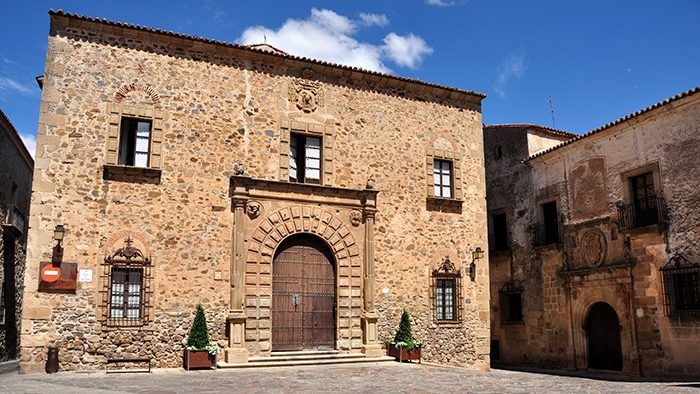
The Cáceres Palace was originally built in the 13th century as a Parish house. The front of the building is Renaissance style and decorated with medallions on the rounded doors. It is located in the Plaza de Santa María and offers free access to its courtyards for visitors. Inside, the Catholic bishop lives and governs the diocese Coria Cáceres.
The part I liked the most about this mansion from the 15th century was the coat of arms that the noble Solis family (family of the sun) built at the entrance of the house. The Solis family helped Cáceres become a prosperous city in its glory days. Their family’s coat-of-arms features an image of a face inside of a sun with snakes biting at the rays. Inside the home, visitors can enjoy the open-air courtyard where the Solis family used to sit out and enjoy their summers within their glorious abode.
If you enjoy reading about my travel adventures and want more, explore enchanting destinations in Extremadura through our carefully curated list of must-visit places.

Before I went to Cáceres I did not really know that much about the city. Everything I knew came from my personal online research because I didn’t know anyone who had visited the city before me. After my stay, however, I found that it is one of the most well preserved cities in Spain and it is no wonder why people have inhabited the place since the Paleolithic period. Almost every building in Cáceres’ historical center dates back to the medieval ages. You can definitely feel the difference in this city from all the other Spanish cities just by looking left to right. Roman, Arabs, Jews, and Christians all made their mark on this city, and were the ones who built the beautiful cathedrals, churches, bridges, and palaces still standing today.
One of the things I was especially impressed by was the preservation of the sites, especially the 30 towers that still survive from the Moorish period. The wall still stands today and the difference between old and new is very distinct. Also, I was fortunate enough to be in Cáceres when the medieval festival was taking place. There were hundreds of people in the streets celebrating and drinking, making it a fun atmosphere to experience. All the people that participated in the festival were in medieval attire accompanied by camels and donkeys, which made my experience so incredibly unique. The festival helped me to imagine Cáceres during the time of its original splendor, with all the sights and sounds from hundreds of yeas ago. Overall, this is a must-see city in Spain, although very few people know about it. If you want to encounter a mix of the Iberian past and present, then you cannot miss Cáceres.
What are your recommendations for things to see in Cáceres? We would love to hear from you! Leave us a question or comment below.
Counter
101 Countries • 1432 Cities